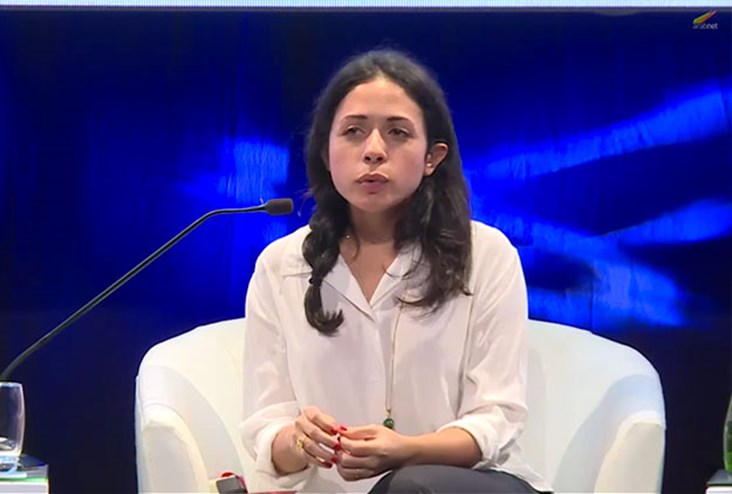
The proliferation of devices is making it more challenging for brands to capture the attention of their customers. And so to be part of the conversation, many brands have shifted away traditional ad spots towards the creation of entertaining value added content. Here to shed his light on how companies are using branded content to create engaging narratives for and around their brands stories to help them stand out are Brian Scudder, co-founder of Content Marketing firm Switch Media, Mariam Chahin, Head of Marketing, Marks & Spencer, MENA, and Joseph Sindaha, Digital Marketing Manager, Nestlé Middle East. The panel was moderated by Ziad Khammar, strategy and development director of DMS.
Buzzfeed has over 150 million unique users, and generates millions of dollars in ad revenue every month. Yet they don’t make a single dollar from banner ads. How? Branded content. What’s more, content is inherently cross device. You don’t need to ask yourself whether you want to be on mobile, tablet or web; the content goes everywhere.
SEE ALSO: How Content Branding Developed in Recent Years
The challenge of distribution
Creating content is challenging, but the bigger challenge is distribution. “There is a little convergence going on where you have advertising agencies, branding agencies, public relations agencies, all starting to produce content in ways that is specifically digital,” explains Brian. This is relatively new to the region and quite exciting he adds. “But a part of the problem there is the distribution; no one has really nailed the distribution yet.” We talk about strategy he says, but in fact we should be talking about plans and goals. After that, companies should be “doing audit on assets that exist already. What kind of assets needs to be created to hit target audiences, and then work on the distributions channels from there.” We should start our work from the audience, try to understand what they are looking for and what our messages should be and then flesh out the distribution channels.
Joseph shared his experience at Nestlé, explaining that in their first experience, they were very focused on “getting the content right” that they didn’t give much thought into distribution. Their hope was that the quality of the content would help spread the word about the show. “As we went along we started to realize that half way into season one that distribution is key for all brands that are playing in this space.” It will eventually grow organically, but very much like TV, the mass launch is really necessary for any branded content piece that you do. Distribution is important he adds because you need to bring in a community that is interested in entertainment and the type of content you are producing specifically.
The challenge of measurement
Another problem: feedback. Mariam explains that while “the data may be there, but the analytics certainly isn’t.” At which point Brian interjects: “Are the analytics up to scratch to actually work out what’s really happening as opposed to what you’ve been told is happening.” Software is getting better at tracking analytics, and the technology is making its way into the region. What brands are doing right now is trial and error he adds. “Try it; if it doesn’t work do something else.” He did stress the fact that we have to be honest about analytics and delivery, “whether we are actually delivering what we think we are delivering.”
RELATED: Why Brands Should Engage Customers on Multiple Screens
The challenge of benchmarking
Joseph on his part highlighted another problem: “It’s everywhere. I need to do a little bit on Facebook, i need to do a little bit on YouTube, and at the end when you sit down benchmark and think did this campaign do really well or not?” The first thing they learned was that you have to look at each problem separately. “That is very difficult,” because when you are faced with management, they do not care for that assessment, they want to know whether the campaign succeeded or not.
Brian interjects again explaining that large part of the problem with branded content lies in the fact that brands nowadays have to deal with an entirely new set of demographics that haven’t really been explored, “and certainly not digitally explored.”
Mariam points out that the challenge lies in identifying the objective of each channel. “Not all media out there is here to serve the same purpose.” You should be wary about that from the very beginning.
For the full discussion, check the video below:
Latest Business
Intelligence Report














